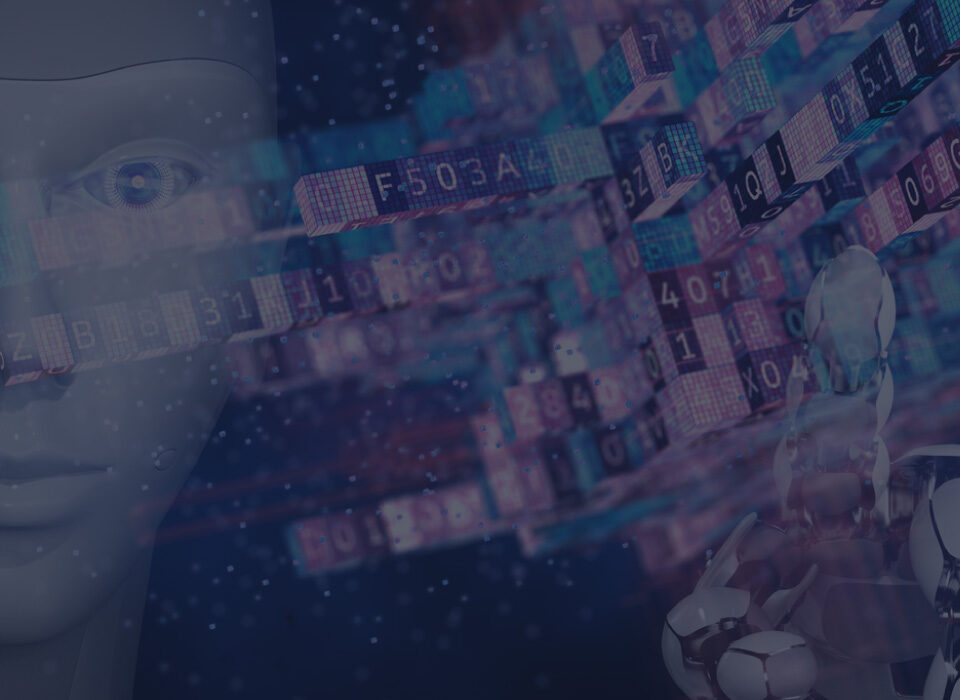
Leveraging AI and Machine Learning in Inventory Management
August 9, 2024
Leveraging IoT for Enhanced DDMRP Execution in Inventory Management 4.0
August 30, 2024In today’s rapidly evolving business landscape, characterised by volatile demand patterns and complex global supply chains, efficient inventory management has become more crucial than ever. Demand Driven Material Requirements Planning (DDMRP) has emerged as a powerful methodology to address these challenges, enabling companies to align inventory levels with actual market demand and optimise their supply chain operations. However, traditional DDMRP implementations often face hurdles related to data transparency, accuracy, and real-time collaboration across the supply chain network. Enter blockchain technology, a decentralised and immutable ledger system that promises to revolutionise DDMRP by enhancing transparency, efficiency, and trust across the entire supply chain ecosystem.
Understanding the Challenges in Traditional DDMRP Implementation
Demand Driven Material Requirements Planning (DDMRP) is a powerful methodology that aligns inventory levels with actual market demand, promoting supply chain efficiency and reducing waste. However, traditional DDMRP implementations often face challenges related to data integrity, visibility, and collaboration.
Data Integrity and Visibility Issues
At the heart of DDMRP lies the critical need for accurate and timely data. This information serves as a foundation for accurate demand forecasting and informed inventory decisions. Unfortunately, traditional systems often struggle to maintain data integrity due to a reliance on manual processes. Human intervention, while sometimes necessary, introduces the risk of errors, omissions, and inconsistencies. The existence of disparate systems further complicates matters. When data is scattered across multiple platforms, it becomes difficult to ensure consistency and accuracy. This lack of a unified data repository can lead to misinterpretations, delays, and suboptimal decision-making. Additionally, limited visibility across the supply chain can create blind spots. If stakeholders lack a clear picture of inventory levels, production schedules, and demand fluctuations in real-time, it becomes challenging to respond proactively to changes and avoid disruptions.
Vulnerability to Errors and Fraud
Centralised data storage, a hallmark of traditional systems, creates a single point of failure. This centralised architecture not only increases the risk of data breaches and cyberattacks but also makes the system vulnerable to manipulation and fraud. Unscrupulous actors may exploit this vulnerability to alter data, misrepresent demand, or engage in other illicit activities. Such actions can have a devastating impact on DDMRP implementations. Inaccurate demand forecasts can lead to stockouts, leaving customers dissatisfied and sales opportunities missed. Conversely, overstocks can tie up valuable capital and increase carrying costs, negatively affecting the bottom line.

Lack of Real-Time Collaboration
DDMRP’s success hinges on effective collaboration among various stakeholders in the supply chain, including suppliers, manufacturers, distributors, and retailers. Each party plays a vital role in ensuring that products flow smoothly from the point of origin to the end consumer. Traditional systems, with their limited real-time communication and data sharing capabilities, often hinder such collaboration. When stakeholders operate in silos with outdated or incomplete information, it becomes difficult to coordinate activities, identify potential bottlenecks, and respond swiftly to unexpected events. This lack of real-time collaboration can lead to delays, inefficiencies, and missed opportunities.
Introducing Blockchain’s Immutable Ledger
In the quest for a more resilient and efficient DDMRP implementation, blockchain technology emerges as a beacon of hope, offering a robust solution to the inherent challenges that plague traditional systems. Renowned for its decentralised and tamper-proof nature, blockchain holds the key to unlocking a new era of transparency, trust, and streamlined operations in supply chain management.
Decentralised and Tamper-Proof Records
At its core, blockchain operates as a distributed ledger, where every transaction and piece of data is recorded across a network of computers rather than being stored in a central location. This decentralised architecture ensures that no single entity has control over the information, making the system resistant to manipulation and fraud.
Furthermore, each transaction on the blockchain is cryptographically linked to the previous one, forming an unbroken chain of blocks. This ingenious design makes it virtually impossible to alter or delete any record without consensus from the network. Consequently, the blockchain serves as an immutable ledger, providing an unparalleled level of data integrity and security. This immutability promotes trust among supply chain partners, as everyone can be confident that the information they access is accurate and reliable.
Enhanced Trust and Transparency
One of the most significant advantages of blockchain is its ability to promote transparency across the supply chain. With traditional systems, data is often siloed and fragmented, leading to information asymmetry and a lack of trust among stakeholders. Blockchain, on the other hand, provides a shared and transparent view of all transactions and data. Every participant in the network has access to the same immutable ledger, enabling real-time tracking of inventory, orders, and shipments.
This newfound transparency fosters a culture of trust and collaboration. Suppliers, manufacturers, distributors, and retailers can readily verify the authenticity and provenance of goods, reducing the risk of counterfeit products and ensuring ethical sourcing practices. Moreover, the ability to track products in real-time allows for better demand forecasting, proactive inventory management, and improved customer service.

Streamlined Supply Chain Auditing
In today’s complex global supply chains, auditing and compliance can be a time-consuming and resource-intensive process. Traditional methods often involve manual checks and paper trails, leaving room for errors and inefficiencies. Blockchain’s inherent audit trail capability simplifies this process significantly. Every transaction on the blockchain is recorded with a timestamp and the digital signature of the involved parties. This creates an immutable and transparent record of all activities, making it easy to track and verify any transaction at any point in time.
This streamlined auditing process not only saves time and resources but also ensures accuracy and traceability. Businesses can easily demonstrate compliance with regulations and standards, while also identifying and addressing any potential issues in a timely manner. Furthermore, the increased transparency offered by blockchain can help build consumer confidence and brand reputation.
Key Applications of Blockchain in DDMRP
Blockchain’s unique characteristics make it a powerful tool for enhancing various aspects of Demand Driven Material Requirements Planning (DDMRP), streamlining processes, and driving greater efficiency across the supply chain.
Secure Inventory Management
Inventory management is central to DDMRP. Accurate, real-time visibility into stock levels is crucial for effective decision-making. Traditional inventory systems often suffer from data silos, delays in information sharing, and potential discrepancies between physical and digital records. Blockchain offers a transformative solution by enabling the creation of a shared, tamper-proof ledger that provides a real-time view of inventory levels across the entire supply chain.
Each movement of goods, from production to shipment to receipt, is recorded as a transaction on the blockchain. This creates an immutable and transparent record of inventory levels at every node in the supply chain. Stakeholders can access this information in real-time, ensuring everyone has the most up-to-date picture of available stock. This level of visibility minimises the risk of stockouts and overstocks, as companies can proactively adjust their inventory levels based on actual demand signals rather than relying on outdated or incomplete information. Furthermore, the increased accuracy of inventory data enables more precise demand forecasting, leading to optimised production schedules and improved customer satisfaction.
Real-Time Demand and Supply Tracking
In the fast-paced world of modern business, the ability to track and trace goods in real-time is paramount. Delays, disruptions, or unforeseen events can have a cascading effect on the supply chain, leading to lost sales, increased costs, and dissatisfied customers. Blockchain’s traceability capabilities offer a solution to this challenge by providing end-to-end visibility into the movement of goods.
Each product can be assigned a unique digital identifier that is recorded on the blockchain. As the product moves through the supply chain, each transaction, such as shipment, receipt, or quality inspection, is recorded as a new block on the chain. This creates a comprehensive and transparent audit trail that allows stakeholders to track the product’s journey in real-time.
In the context of DDMRP, this real-time tracking capability provides invaluable insights into demand and supply patterns. Companies can monitor the flow of goods, identify potential bottlenecks, and proactively adjust their inventory levels and production schedules to meet fluctuating demand. This agility helps minimise disruptions, reduce lead times, and ensure that products are available when and where customers need them.
![]()
Smart Contracts for Automated Order Fulfilment
Order fulfilment is a critical process in any supply chain, and its efficiency can significantly impact customer satisfaction and overall profitability. Traditional order fulfilment processes often involve manual intervention, paperwork, and multiple intermediaries, leading to delays, errors, and increased costs. Smart contracts, powered by blockchain technology, offer a way to automate and streamline these processes.
A smart contract is a self-executing contract with the terms of the agreement directly written into lines of code. These contracts are stored on the blockchain and automatically execute when predefined conditions are met. For example, a smart contract could be triggered to initiate a payment once a shipment is confirmed as received. This automation eliminates the need for manual intervention, reduces the risk of errors, and accelerates transaction times.
In the context of DDMRP, smart contracts can be used to automate various aspects of order fulfilment, such as purchase order creation, invoice generation, and payment processing. This not only reduces administrative overhead but also improves accuracy and speeds up the entire process. Furthermore, smart contracts can enhance transparency and trust by ensuring that all parties adhere to the agreed-upon terms.
Overcoming Challenges in Blockchain Adoption for DDMRP
While the potential benefits of integrating blockchain technology into DDMRP are undeniable, several challenges need to be addressed to ensure successful adoption and implementation. Recognizing and proactively addressing these hurdles is essential for companies looking to harness the full power of blockchain in their supply chain operations.
Initial Investment and Technical Expertise
Implementing blockchain technology requires an initial investment in infrastructure, software, and skilled personnel. Companies need to acquire or develop the necessary hardware and software to run blockchain nodes and manage the network. Additionally, they need to hire or train employees with the technical expertise to design, implement, and maintain blockchain solutions. While these initial costs can be substantial, it’s important to consider the long-term benefits that blockchain can bring. Improved efficiency, reduced costs, enhanced transparency, and increased customer satisfaction can all contribute to a significant return on investment over time.
Scalability and Interoperability
Blockchain scalability refers to the network’s ability to handle a growing number of transactions and data. As supply chains become more complex and the volume of data increases, ensuring that the blockchain can handle the load without sacrificing performance or security is crucial. Interoperability, on the other hand, refers to the ability of different blockchain networks and legacy systems to communicate and exchange data seamlessly. In a typical supply chain, various stakeholders may be using different systems. Ensuring that these systems can interact with the blockchain is essential for realising its full potential. Advancements in blockchain technology, such as sharding and layer-2 solutions, are addressing scalability concerns. Similarly, efforts are underway to develop standards and protocols that promote interoperability between different blockchain networks and legacy systems.
Regulatory Compliance
As blockchain technology evolves, regulatory frameworks are also developing. Different countries and regions may have varying regulations regarding the use of blockchain, data privacy, and cryptocurrency transactions. Companies need to stay abreast of these evolving regulations and ensure that their blockchain implementations follow all applicable laws and standards. Failure to do so can cause legal and financial penalties.
Navigating the regulatory landscape can be complex, particularly for businesses operating in multiple jurisdictions. It’s essential to engage legal and compliance experts who can provide guidance on the specific requirements and help ensure that blockchain solutions are implemented in a compliant manner.

The Future of DDMRP with Blockchain
The integration of blockchain technology into DDMRP heralds a promising future for supply chain management, one marked by heightened transparency, efficiency, and sustainability. As the technology continues its rapid evolution, we can anticipate a profound transformation in how businesses operate and interact within their supply chain networks.
Real-World Use Cases and Success Stories
Already, several pioneering companies have embarked on the journey of exploring and implementing blockchain within their DDMRP processes. These early adopters are showcasing the tangible benefits that blockchain can bring to the table. From enhanced traceability and improved inventory management to streamlined procurement and reduced counterfeiting, the real-world use cases demonstrate the potential of blockchain to revolutionise supply chain operations. These success stories serve as a beacon for other businesses, inspiring them to embrace this transformative technology and unlock new levels of efficiency and competitiveness.
Potential for End-to-End Supply Chain Visibility
One of the most exciting prospects of blockchain in DDMRP is its ability to facilitate end-to-end supply chain visibility. By connecting disparate stakeholders and providing real-time access to data, blockchain can break down information silos and foster a collaborative environment where everyone has a clear view of the entire supply chain. This level of transparency empowers businesses to make informed decisions, anticipate potential disruptions, and respond proactively to changing market conditions. It also enhances accountability and traceability, enabling companies to verify the authenticity and provenance of goods, ensuring ethical sourcing practices and building consumer trust.
Building a More Sustainable and Efficient Supply Chain Network
In an era of increasing environmental awareness and resource scarcity, sustainability has become a key imperative for businesses. Blockchain can play a pivotal role in building a more sustainable and efficient supply chain network. By promoting transparency and traceability, blockchain can help reduce waste, optimise resource utilisation, and minimise the environmental impact of supply chain operations. Moreover, the ability to track and verify the sustainability credentials of products can enable companies to make more informed procurement decisions and support responsible sourcing practices.
Conclusion
In conclusion, blockchain technology presents a powerful opportunity to enhance the transparency, efficiency, and resilience of DDMRP implementations. As the technology continues to evolve and mature, we can expect to see even greater adoption and innovation in the supply chain space. By embracing blockchain, businesses can build a more agile, responsive, and sustainable supply chain network that is better equipped to meet the challenges of today’s dynamic market.
Understand how blockchain can enhance transparency and security in your DDMRP-enabled inventory management.





